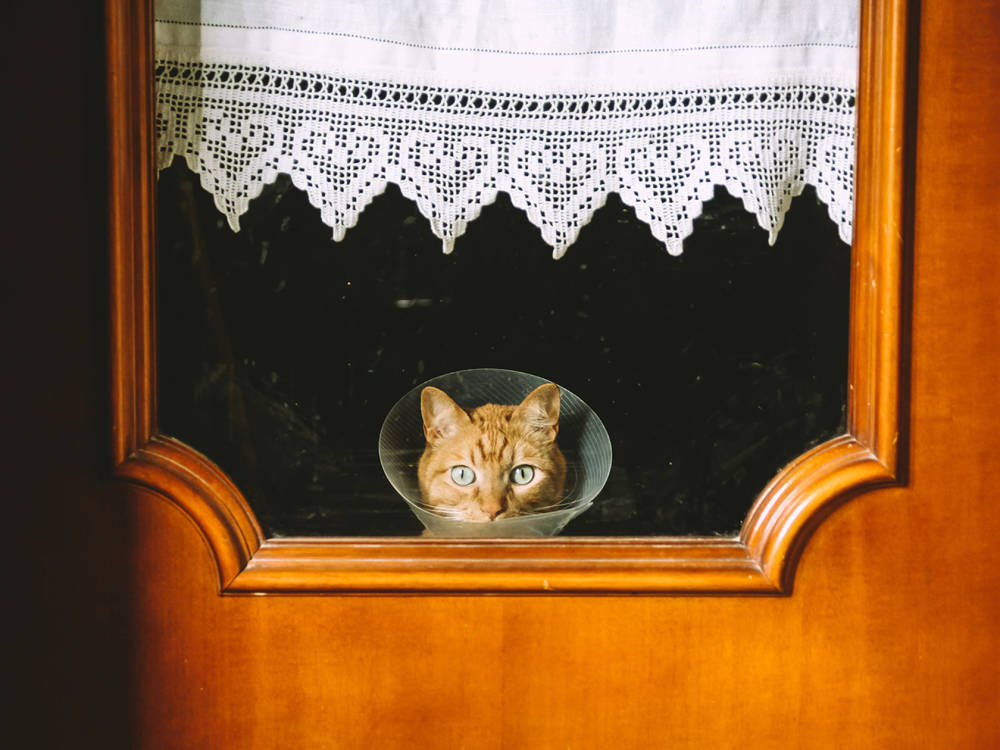Doctor’s Orders: Cat Vet Visits Are Essential
Get thy cat to a vet, even if it’s a struggle to get them out the door.

share article

Your pet wants you to read our newsletter. (Then give them a treat.)
Loading a spirited cat into a carrieropens in a new tab requires some prowess, and there is still no guarantee that you’ll emerge from the experience without a scratch. But a trip to the vet is as verifiably unpleasant as it is essential for your cat’s wellbeing. So as much as you may want to avoid the whole ordeal, you should hear what two vets have to say about how often you should take a cat to the vet — at every life stage.
Kittens
“Kittens require a lot of care and need to go to the vet a lot during their first year,” says Dr. Amy Stone. These initial wellness visits are key to keeping your cat healthy. Besides a general exam, your kitty will need a blood test for feline leukemiaopens in a new tab, fecal test for parasitesopens in a new tab, initial vaccinationsopens in a new tab (plus booster shots), and to be spayed or neuteredopens in a new tab. During these checks, your vet will confirm that your kitten is hitting all of their growth milestones and shows no signs of congenital defects like cleft palate, extra toes, undescended testicles, or neurological deficits that could upset their balance.
Adult Cats
It all adds up to roughly five vet visits before your cat even celebrates their first birthday — after which Stone recommends annual visits for preventive care: exams, blood work, heartworm and flea/tickopens in a new tab preventatives (if you have outdoor cats), and prescriptions as needed. If your cat appears to be in good shape, it may be tempting to skip those annual check-ups. We empathize — you can never unhear the yowling. And don’t even get us started on the parental guilt that comes with subjecting your kitty to the stress of a vet clinic. Neither of which, sorry to say, are reasons Dr. Bruce Kornreich, director of the Cornell Feline Health Center, is trying to hear.
A couple of years ago, the American Veterinary Medical Association found that only 54 percent of cat owners make the annual trip to the vet — yikes. “You want to identify problems as early as possible,” says Kornreich. “The sooner you catch a problem, the more likely a medical or surgical outcome is likely to be successful.” Your vet also provides more than preventive care. Anytime you notice a change in your cat’s health, ask your vet — not Google. Symptoms like diarrheaopens in a new tab, vomitingopens in a new tab, increased thirst, rapid breathing, and nasal discharge, are all signs your cat needs immediate care. “If you don’t call, whatever [the problem is] could get a lot worse,” adds Stone.
Senior Cats
As the number of candles on your cat’s birthday cake inches up, so should the frequency of their vet visits. Kornreich recommends that cats over 10 years old see a vet twice a year. “As cats get older, the incidence of disease goes up,” he says. Diabetesopens in a new tab, heart disease, hypothyroidism, arthritisopens in a new tab, canceropens in a new tab, and dental diseaseopens in a new tab are all more common in older cats. Biannual visits allow your vet to check for signs that something is amiss and increase the odds that your geriatric cat is as healthy as possible during their golden years. You can’t argue with that.

Jodi Helmer
Jodi Helmer is a North Carolina-based freelance writer who shares her home with an embarrassing number of rescue dogs and relies on four feral cats to patrol the barn. When she isn’t refilling food and water dishes, Jodi writes about animals for Scientific American, Sierra, WebMD, AKC Family Dog, Living the Country Life, and Out Here.
Related articles
![cat getting a vaccine at the vet]() opens in a new tab
opens in a new tabYep, Kittens Need Vaccines (Even Indoor Ones)
A vet gets the facts straight.
![one white cat in a black carrier next to two other cats looking up]() opens in a new tab
opens in a new tab8 Cat Carriers for a Quiet Ride
It’s the journey, not the destination.
![Kitten sitting on a blanket]() opens in a new tab
opens in a new tab7 Steps to Keep Your New Kitten Happy and Healthy
With great cuteness comes great responsibility. A vet breaks down everything you need to know when you bring home a new kitten.
![A woman with tattoos hugging her white cat in a cluttered, art-filled room]() opens in a new tab
opens in a new tabCats, Priceless. Cat Parenthood, Not So Much
A rundown of the most common cat expenses.




